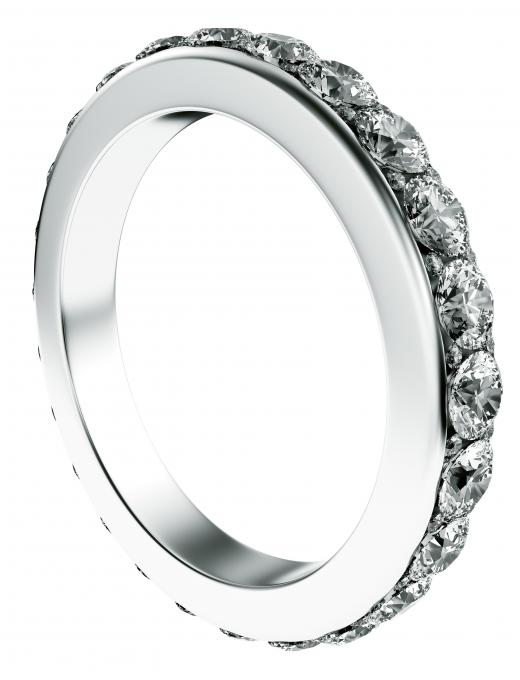What are the Allotropes of Carbon?
 Michael Anissimov
Michael Anissimov
Carbon, due to its unique chemical bonding properties, has the most stable allotropes of any element. Some allotropes of carbon, such as graphite and diamond, occur naturally; others, such as nanotubes, must be manufactured in the laboratory. Carbon's abundance and versatility makes it one of the most studied materials in nanotechnology research, and its allotropes have a wide range of useful properties, such as high tensile strength and high melting points.
Amorphous carbon and graphite are the two most common allotropes, and they make up the majority of natural carbon compounds such as coal and soot. Amorphous carbon has no particular crystal structure, like most glasses. The carbon atoms in graphite are arranged in layers; each layer has strong bonds holding it together, but the layers don't bond strongly, and they can easily be rubbed off each other. Pure pyrolytic graphite, where the layers are all arranged in the same plane, is an extremely strong, heat-resistant material used in high-stress, high-temperature environments. Graphite conducts electricity and can be used as a moderator for nuclear reactors.

Diamond, the other natural carbon allotrope, has a rigid, interlocking crystal structure. Diamond is one of the hardest substances known, and is used in industry to grind and cut materials. The transparency and durability of diamond make it highly prized as a gemstone, and the jewelry business has turned diamond mining into a multi-billion dollar industry. Diamond can be manufactured synthetically from other allotropes, but it requires extremely high temperatures and pressures to form.

Other, more exotic allotropes include buckyballs, nanotubes and carbon nanofoam. These occur naturally in soot, and have been found in at least one planetary nebula, though they can also be created synthetically. Buckyballs are closed, ball-shaped networks of carbon atoms, which form interlocking pentagons and hexagons. Carbon nanotubes share the same structure as graphite, but instead of having a stack of layers, a nanotube wraps around and bonds with itself, forming a long cylinder. Carbon nanotubes have very high tensile strength, making them attractive as new construction materials, although they are not nearly as strong under compression.
AS FEATURED ON:
AS FEATURED ON:













Discussion Comments
@jerry70 – Carbon has many other uses. In addition to graphite and diamonds, researchers are looking for a way to make carbon nanotubes into rope. In addition, carbon dioxide gives sodas their fizziness, and carbon is also used as a base for the ink used in inkjet printers. Freon is also a form of carbon that’s used in cooling devices and systems.
Wow, I never realized there were so many different allotropes of carbon. I knew about graphite and diamonds of course; those are some of the more common allotropes of carbon. Can anyone tell me what some of the other allotropes of carbon are used for?
I always enjoy your site, and it always has useful information...keep up the good work, thanks.
Post your comments